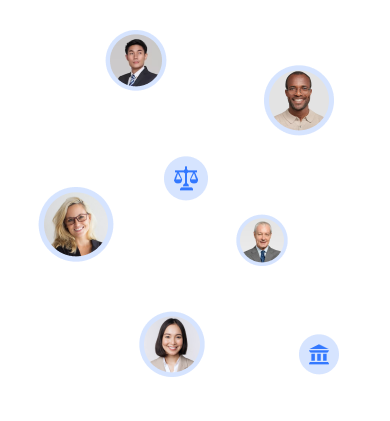Intentional torts are legal wrongs committed deliberately by one person against another, resulting in harm or injury.
Florida recognizes various types of intentional torts, including assault and battery, false imprisonment, and defamation.
Understanding the elements of an intentional tort claim, including intent, harm, and causation, is essential for pursuing legal action.
Knowing the defenses to intentional tort claims, such as consent and self-defense, is crucial in navigating the legal system.
Let’s explore Florida’s laws on intentional torts and how they may impact your rights and liabilities.
What Are the Types of Intentional Torts?
Intentional torts are purposeful actions that result in harm or injury to others, and they are a key aspect of tort law. In Florida, these actions encompass behaviors like assault, battery, defamation, and other intentional harms, frequently resulting in legal proceedings where affected parties pursue compensation with the assistance of a personal injury lawyer.
1. Assault and Battery
Assault and battery are common intentional torts that involve intentional acts causing personal injury to another individual.
Assault is legally defined as the intentional act of causing another person to fear that they will be physically harmed, whereas battery involves the intentional harmful or offensive contact with another person without their consent. The key difference between the two lies in the actual physical contact.
For instance, in a case where a person threatens to hit someone but does not actually make physical contact, it constitutes assault. On the other hand, if the person follows through with the physical contact, it becomes a case of battery.
Victims of these intentional torts may seek various damages, including compensatory damages for medical expenses, pain and suffering, and punitive damages to punish the wrongdoer and deter future misconduct.
2. False Imprisonment
False imprisonment is an intentional tort that occurs when a person is unlawfully confined against their will.
This type of illegal restraint can happen in various settings, such as being wrongfully detained in a store accusing shoppers of theft without evidence, being held against one’s will in a private residence, or using physical force to prevent someone from leaving a room.
Legal consequences for false imprisonment can result in compensation for damages, including emotional distress and lost wages. Victims of false imprisonment have the right to seek legal recourse through civil lawsuits to hold the perpetrator accountable for their actions.
3. Intentional Infliction of Emotional Distress
The intentional infliction of emotional distress is a tort that involves an intentional act resulting in severe emotional harm to the victim.
To prove this tort, certain elements must be established, such as the defendant’s outrageous conduct that goes beyond the bounds of decency, the intention to cause emotional distress, the causation of severe emotional harm, and the presence of a direct link between the conduct and the harm suffered by the victim.
One real-life example of intentional infliction of emotional distress could be a case where an employer consistently humiliates and belittles an employee in front of colleagues, causing the employee to develop severe anxiety and depression.
The emotional and psychological impact on victims of this tort can be debilitating, leading to conditions such as PTSD, severe anxiety, depression, and even suicidal thoughts.
In the case of Wilkinson v. Downton, which set a precedent for intentional infliction of emotional distress, the court ruled in favor of the plaintiff who suffered nervous shock due to a prank played by the defendant, recognizing the validity of emotional harm as a basis for legal action.
4. Trespassing
Trespassing is an intentional tort that occurs when an individual unlawfully enters another person’s property.
The legal definition of trespassing varies by jurisdiction but typically involves crossing physical boundaries without permission from the property owner. Property owners have a right to exclude others from their land and are entitled to take legal action against trespassers. Trespassers can be held liable for any damages they cause while on someone else’s property.
For example, if a trespasser enters a construction site and gets injured, they may be held responsible for their medical expenses. In more severe cases, trespassing can lead to criminal charges if the offender refuses to leave the property or engages in harmful activities.
5. Conversion
Conversion is an intentional tort that involves the unauthorized taking or use of someone else’s property, resulting in damages. Conversion can occur in various situations, such as when a person borrows an item and refuses to return it, or when a business unlawfully uses copyrighted material without permission.
In such cases, the victim of conversion can seek legal remedies to recover their property or obtain compensation for the damages incurred. Legal recourse may include filing a lawsuit against the responsible party to seek restitution. Depending on the circumstances, victims of conversion may be entitled to damages for the value of the property taken, lost profits, or punitive damages to deter similar misconduct in the future.
6. Defamation
Defamation is an intentional tort that damages a person’s reputation through false statements, and it is recognized under Florida law.
In legal terms, defamation encompasses both libel, which refers to written or published false statements, and slander, which involves spoken false statements. For instance, if someone spreads a malicious rumor about another person, causing harm to their reputation, it could constitute as slander. On the other hand, if false information is printed in a newspaper article leading to reputational damage, it would be categorized as libel.
Famous defamation cases include the one involving actress Rebel Wilson, who won a landmark case against a magazine for publishing false stories about her.
The legal process for filing a defamation lawsuit typically involves proving the false statement, its publication, the resulting harm to reputation, and the intentionality behind it. If the court rules in favor of the victim, damages can vary, including compensation for financial losses, emotional distress, and punitive damages as a deterrent against future defamation.
7. Invasion of Privacy
The invasion of privacy is an intentional tort that occurs when an individual’s personal rights are violated through unauthorized intrusion. This violation of personal rights can manifest in different forms, including intrusion upon seclusion and public disclosure of private facts.
Intrusion upon seclusion occurs when there is unauthorized interference with an individual’s private matters, such as through surveillance or eavesdropping. On the other hand, public disclosure of private facts involves the dissemination of confidential or sensitive information about an individual to the public without their consent.
Legal precedents concerning invasion of privacy have been established through various court cases, and victims may pursue lawsuits to seek compensation for the damages caused by such violations.
What Are the Elements of an Intentional Tort Claim?
The components of an intentional tort claim generally involve establishing that the defendant committed a deliberate act, that this act resulted in harm, and that there is a clear causative link between the act and the injury sustained.
1. Intent
Intent is a fundamental aspect in intentional tort claims, referring to the purposeful action taken by the defendant that results in harm.
In legal terminology, intent is described as the mental state in which a person aims to bring about a specific result or knows with significant certainty that their actions will lead to such a result. This mental state is commonly classified as either specific intent, where the individual desires a particular outcome, or general intent, where the individual is conscious that their actions could result in harmful effects.
Demonstrating intent in tort law can be exemplified through actions like assault, where the defendant deliberately causes the plaintiff to fear imminent harmful or offensive contact, or in cases of fraud, where the defendant knowingly makes false statements to deceive another party.
Establishing intent is vital in intentional tort claims as it confirms the defendant’s liability and the intentional nature of their actions, which is crucial in pursuing appropriate legal remedies and compensation for the harm inflicted.
2. Harm
Harm is defined as the injury or damage sustained by the victim due to the intentional actions of the defendant.
In cases of intentional torts, types of harm include:
- Physical harm, where the victim experiences bodily injury as a direct result of the defendant’s intentional actions;
- Emotional harm, which covers psychological distress or mental anguish inflicted purposefully;
- Financial harm, which pertains to monetary losses caused by the defendant’s intentional misconduct.
The process of assessing and proving harm in court involves the presentation of evidence such as medical records for physical harm, testimony from mental health professionals for emotional harm, and financial documents for financial harm. The court examines the extent of harm suffered, the impact on the victim’s well-being and quality of life, and considers compensation to address the damages.
3. Causation
Causation is the element that establishes a direct connection between the defendant’s intentional act and the injury suffered by the plaintiff.
In tort law, causation plays a crucial role in determining liability, as it links the defendant’s actions to the harm experienced by the plaintiff. For instance, if a driver runs a red light and hits a pedestrian, causing injuries, the causation element would need to be proven to show that the driver’s negligent behavior directly led to the pedestrian’s harm.
Proving causation in court often involves presenting evidence such as eyewitness testimonies, expert opinions, medical records, and forensic analysis to demonstrate the clear link between the defendant’s conduct and the resulting injury or damage.
What Are the Defenses to an Intentional Tort Claim?
Defenses to an intentional tort claim can have a significant impact on the outcome of a lawsuit. These defenses typically include arguments like consent, self-defense, and defense of property.
1. Consent
Consent is often used as a defense in intentional tort claims, where the defendant asserts that the plaintiff agreed to the actions that caused the injury.
In legal terms, consent refers to the voluntary agreement to a proposed course of action. This agreement can be explicit, such as signing a waiver before engaging in a hazardous activity, or implied, like a patient giving consent before a surgical procedure.
For instance, in a context of contact sports, participants are usually considered to have consented to certain physical contact inherent to the sport. Consent must be given freely and with a complete understanding of the associated risks.
In cases where consent is successfully used as a defense, the defendant’s liability in intentional tort claims may be lessened or entirely eliminated.
2. Self-Defense
Self-defense is a defense strategy utilized in intentional tort claims to argue that the defendant’s actions were essential to protect themselves from imminent harm. The legal principles of self-defense are based on the notion that the use of force was necessary to prevent harm, with the level of force typically required to be proportional to the perceived threat.
Successful demonstrations of self-defense in court cases often involve scenarios where individuals reacted to a clear and immediate danger, such as physical assault. When self-defense is effectively proven, it can relieve the defendant of liability, underscoring the significance of an individual’s right to self-protection when faced with imminent danger.
3. Defense of Property
Defense of property is a legal defense where the defendant argues that their actions were justified in protecting their property from unlawful intrusion or damage.
This defense is based on the principle that individuals have the right to defend what is rightfully theirs. An illustrative case of the defense of property in action is Katko v. Briney, where the court found the use of spring-loaded shotguns to protect property as excessive force.
On the other hand, in Cramer v. Thoren, the court supported the defense of property when reasonable force was used to remove trespassers. The assertion of defense of property can be significant in intentional tort claims as it has the potential to absolve the defendant from liability by demonstrating that their actions were necessary to safeguard their property.
What Are the Laws on Intentional Torts in Florida?
The regulations concerning intentional torts in Florida encompass specific provisions like the statute of limitations, comparative negligence rules, and the potential for punitive damages, which dictate how these cases are managed in the state.
1. Statute of Limitations
The statute of limitations for filing an intentional tort lawsuit in Florida typically varies from two to four years, depending on the specific type of claim.
These time limits are important to ensure that legal proceedings are initiated within a reasonable timeframe, allowing for the prompt resolution of disputes. For example, assault and battery claims usually have a two-year limit, while defamation cases may allow up to four years.
Failing to meet these deadlines can result in serious consequences, as it may forfeit the right to seek compensation or legal recourse. It is crucial for individuals involved in intentional tort cases to understand these limitations and take timely action to protect their rights.
2. Comparative Negligence
In Florida, the state adheres to a comparative negligence rule, which has implications for liability and damages in intentional tort cases when both parties bear some responsibility for the incident.
Under this rule, if a plaintiff is partially responsible for their injuries, their compensation may be reduced proportionally to their degree of fault. For instance, if a plaintiff is determined to be 20% at fault in an intentional tort case, their damages could be diminished by 20%.
Comparative negligence enables courts to take into account the actions of all parties involved and allocate responsibility accordingly. It influences the distribution of liability and ensures that each party carries an appropriate portion of the blame and financial burden.
3. Punitive Damages
Punitive damages in Florida are awarded in intentional tort cases to punish the defendant for particularly egregious conduct and to deter similar behavior in the future. These damages are not meant to compensate the plaintiff but rather to serve as a form of punishment.
Courts consider several factors when deciding to award punitive damages, such as the nature of the defendant’s actions, the extent of harm caused, and whether the conduct was intentional or grossly negligent.
For example, in a case where a company knowingly produced a defective product that led to severe injuries, punitive damages may be granted to discourage such reckless behavior. The process for determining the amount of punitive damages involves a separate assessment to determine what sum is sufficient to penalize the defendant and discourage future misconduct.
Frequently Asked Questions
1. What is an intentional tort under Florida law?
An intentional tort is a civil wrong where someone intentionally causes harm or injury to another person. This can include acts like assault, battery, and defamation.
2. Are all intentional acts considered intentional torts?
No, not all intentional acts are considered intentional torts. The act must result in harm or injury to another person for it to be considered an intentional tort under Florida law.
3. Can I sue someone for an intentional tort in Florida?
Yes, if you have been a victim of an intentional tort in Florida, you have the right to file a civil lawsuit against the person who caused the harm. This can result in compensation for damages, such as medical expenses and pain and suffering.
4. Is there a time limit for filing a lawsuit for an intentional tort in Florida?
Yes, the state of Florida has a statute of limitations for intentional torts. This means that there is a specific time frame in which you can file a lawsuit, typically within four years of the incident.
5. Can minors be sued for intentional torts in Florida?
Yes, minors can be sued for intentional torts in Florida, but the process may be different. In these cases, the minor’s parents or legal guardians may be held responsible for the actions of the minor.
6. What should I do if I have been a victim of an intentional tort in Florida?
If you have been a victim of an intentional tort in Florida, it is important to seek legal advice from a qualified attorney. They can help you understand your rights and options for seeking compensation for your damages.



























Rate this article:
No Comments yet!